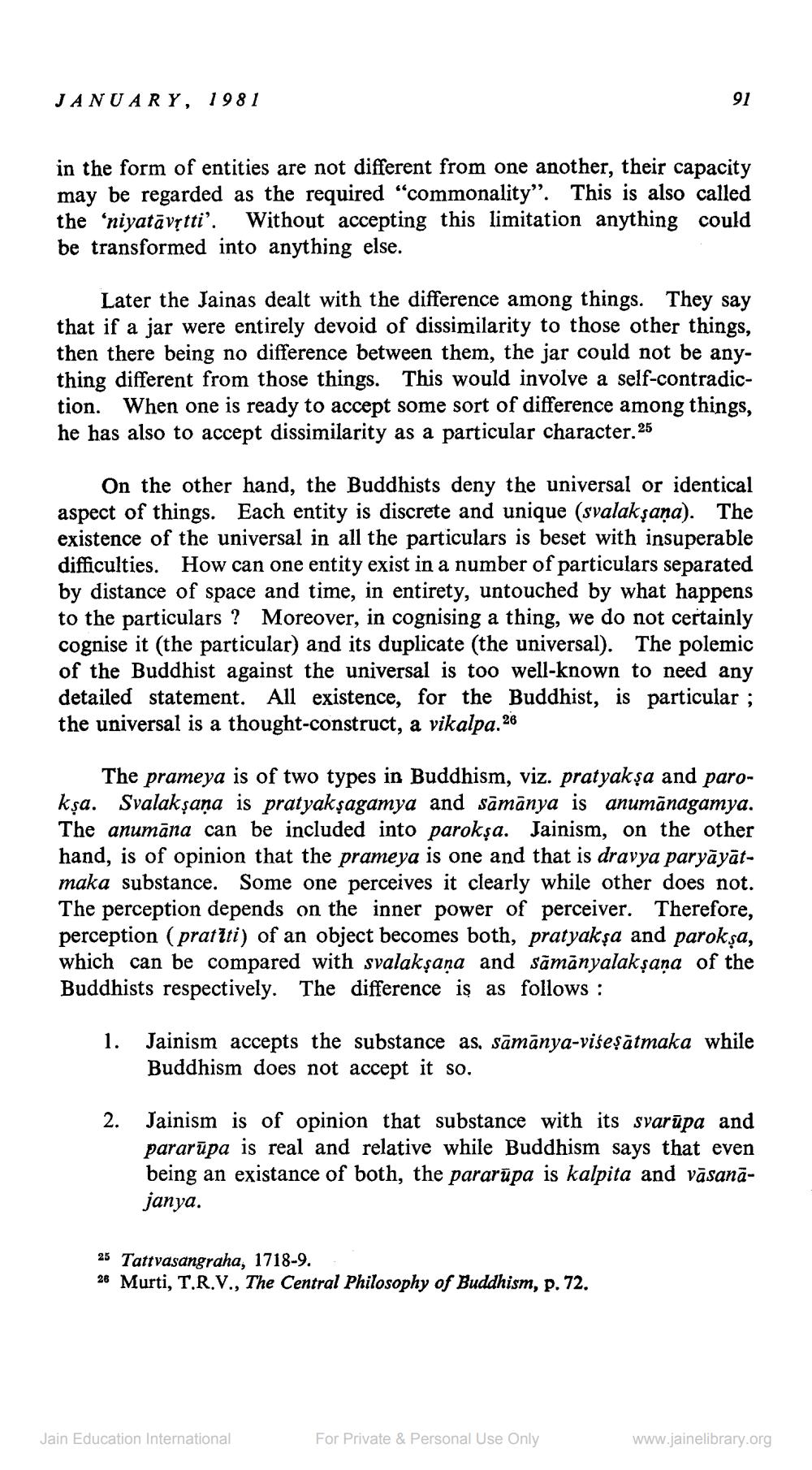________________
JANUARY, 1981
in the form of entities are not different from one another, their capacity may be regarded as the required "commonality". This is also called the 'niyatāvṛtti'. Without accepting this limitation anything could be transformed into anything else.
Later the Jainas dealt with the difference among things. They say that if a jar were entirely devoid of dissimilarity to those other things, then there being no difference between them, the jar could not be anything different from those things. This would involve a self-contradiction. When one is ready to accept some sort of difference among things, he has also to accept dissimilarity as a particular character. 25
91
On the other hand, the Buddhists deny the universal or identical aspect of things. Each entity is discrete and unique (svalakṣaṇa). The existence of the universal in all the particulars is beset with insuperable difficulties. How can one entity exist in a number of particulars separated by distance of space and time, in entirety, untouched by what happens to the particulars? Moreover, in cognising a thing, we do not certainly cognise it (the particular) and its duplicate (the universal). The polemic of the Buddhist against the universal is too well-known to need any detailed statement. All existence, for the Buddhist, is particular; the universal is a thought-construct, a vikalpa. 26
The prameya is of two types in Buddhism, viz. pratyakṣa and parokṣa. Svalakṣaṇa is pratyakṣagamya and samanya is anumānagamya. The anumāna can be included into paroksa. Jainism, on the other hand, is of opinion that the prameya is one and that is dravya paryāyātmaka substance. Some one perceives it clearly while other does not. The perception depends on the inner power of perceiver. Therefore, perception (pratiti) of an object becomes both, pratyakṣa and paroksa, which can be compared with svalakṣaṇa and samanyalakṣaṇa of the Buddhists respectively. The difference is as follows:
1. Jainism accepts the substance as. sāmānya-viseṣātmaka while Buddhism does not accept it so.
2. Jainism is of opinion that substance with its svarūpa and pararūpa is real and relative while Buddhism says that even being an existance of both, the pararūpa is kalpita and vāsanājanya.
25 Tattvasangraha, 1718-9.
26 Murti, T.R.V., The Central Philosophy of Buddhism, p. 72.
Jain Education International
For Private & Personal Use Only
www.jainelibrary.org




